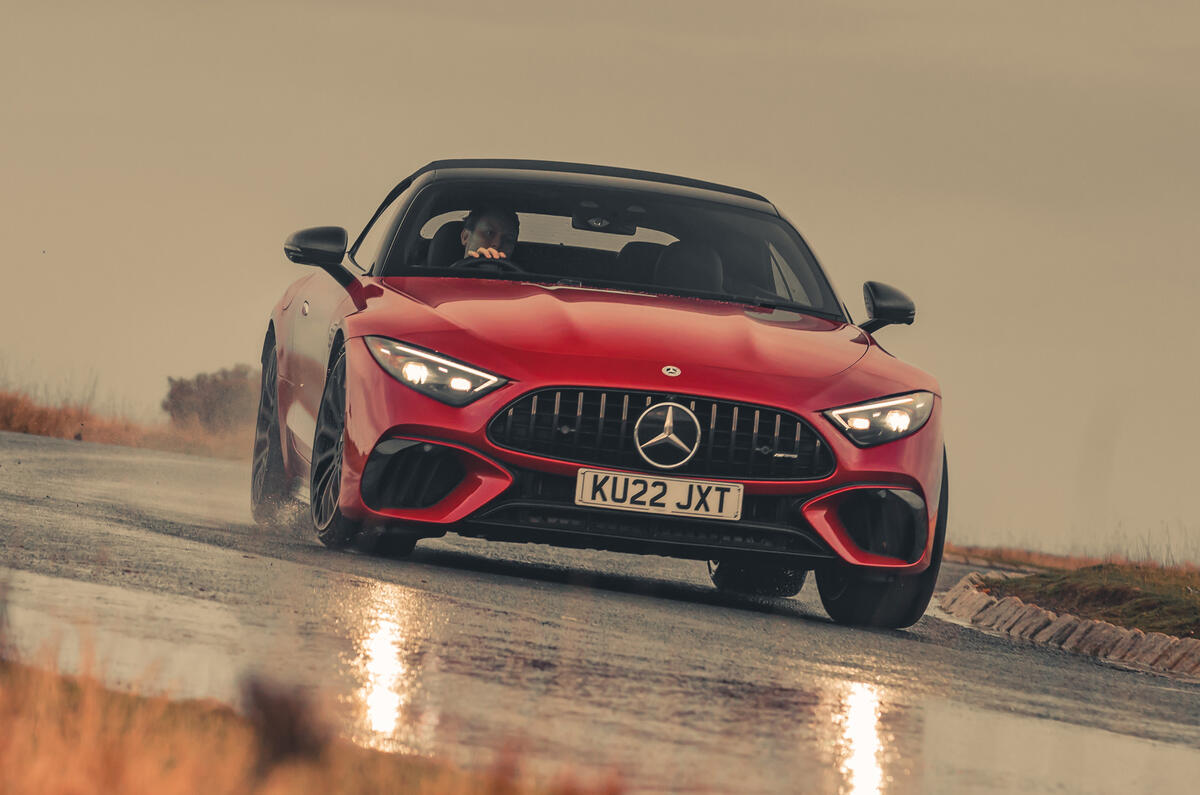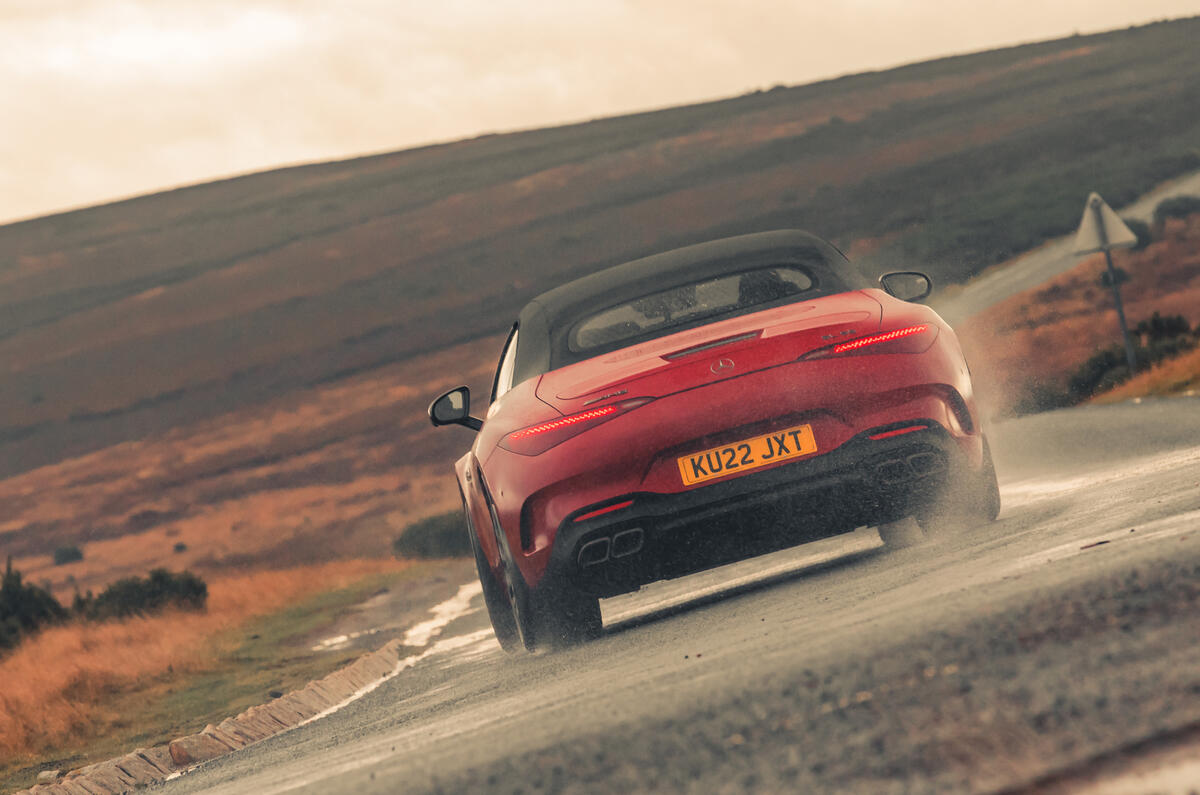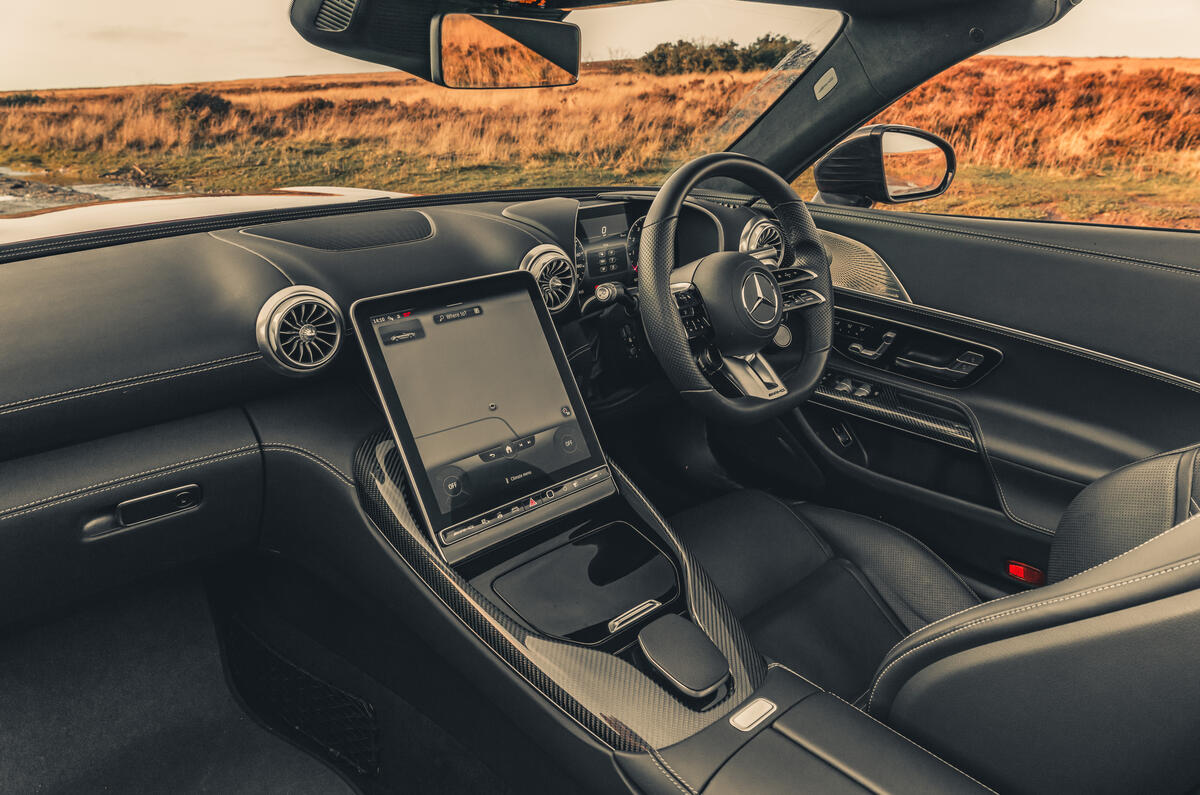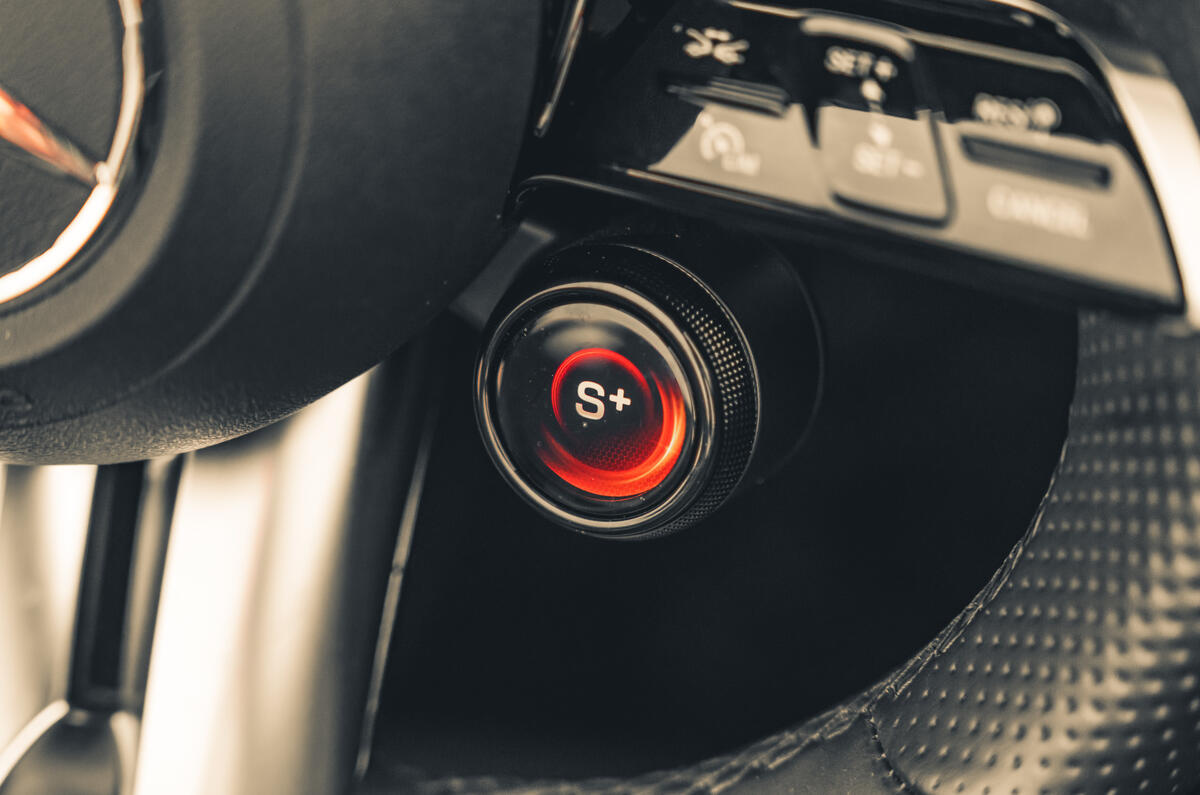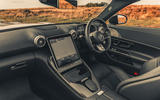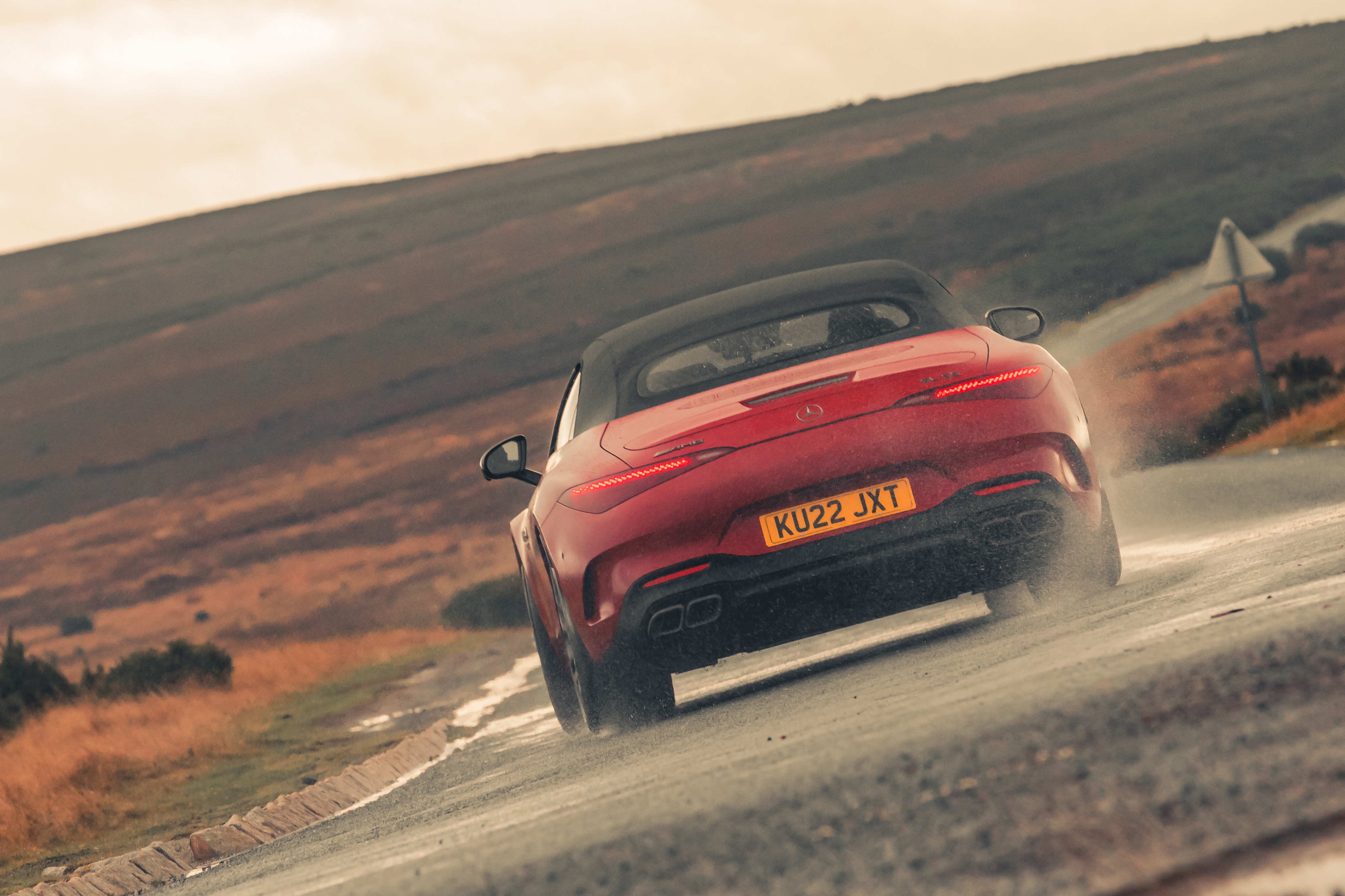The new SL’s cloth hood may be the first difference you notice, but this is the first SL in several generations to offer second-row seating – although you certainly wouldn’t call it a proper four-seater.
Mercedes advises that those back seats are “for passengers up to 1.5 metres tall”. They have very upright backrests and aren’t easy to access or exit, even for passengers who meet that height restriction. But while the ‘+2’ seating erodes the cabin’s sense of exclusivity, they do add some practicality – even when only carrying shopping bags.
You dip low to berth the driver’s seat but will find it comfortable and widely adjustable. There is electric adjustment in just about every direction, but while much of that is automated, it’s not always done so intelligently. Open the door to get out and the seat will motor back and recline automatically to ease your egress, for example. But it will do so even when the sensors for the rear seatbelts tell the car that the chair behind is occupied – and where there was likely to have been scant leg room to begin with.
The head restraints, too, have a habit of lowering themselves automatically as the hood folds up and back – but they don’t then return to their previous positions.
The hood itself is an impressive piece of design, folding and stowing quickly and quietly into a surprisingly tight space that leaves a reasonable amount of luggage room. Some testers bemoaned the route by which it is controlled, however – not by a knurled physical switch but by a dedicated screen on the car’s portrait-oriented central infotainment display. Lowering the roof in a car such as this ought to be a bit of theatre to look forward to, but here it’s a disappointingly fiddly process via a surface that, when the roof has been down, can become a bit too warm to hold a fingertip against comfortably for the required 15 seconds.
The SL’s tilting infotainment display is the central focus of a reductionist cabin design of a theme that Mercedes has dubbed ‘hyperanalogue’: the combination, supposedly, of a simplified classic-looking fascia geometry with the latest digital infotainment technology. But the sense of built-in quality around that screen, and of any really lavish sense of inherent expensiveness and heft to the cabin overall, is a little underwhelming.
It’s all pleasant enough, but there is rather too much plastic masquerading as aluminium in evidence here, along with fewer physical controls with which to engender any substantial expensive tactile feel in the first place, to put this car on a level with the most luxurious-feeling convertibles.



